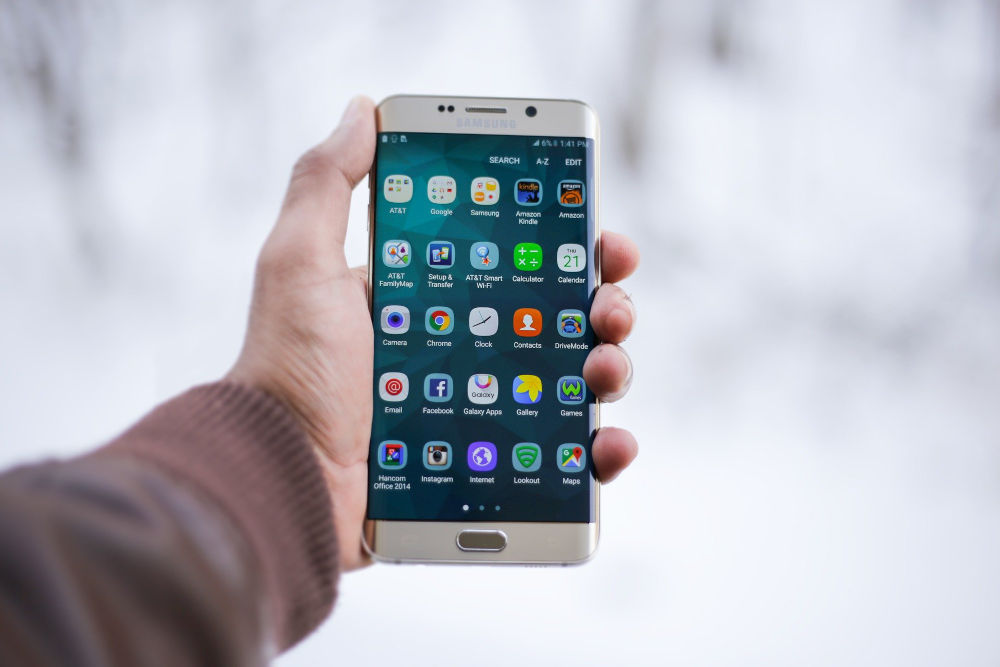For regular luxury jetsetters, constant and reliable connectivity is essential – particularly when you’re travelling for business. Being able to make important calls from wherever you are in the world, and access Zoom meetings and company data online is now easier than ever thanks to the introduction of dual SIM phones – which allow you to switch up your SIM cards to take advantage of all the biggest and best benefits of providers, from any country, anytime.
While phones have traditionally come locked to specific networks, if roaming isn’t available in a particular country or the service there isn’t up to scratch, then this could land you in hot water – which is why many high-flying business travellers and pleasure seekers alike have made the move over to dual SIM. Allowing them to utilise local SIM cards where necessary and switch between providers to get the best of both worlds, it’s one way to ensure that you’re never out of reach – and that any important information remains at your fingertips whenever you need it the most.
Here, we take a deeper dive into all you need to know about dual SIM phones, including the raft of benefits they come with and, why it’s worth making the switch.

Why dual SIM phones are different
Although we already know that any phone that accepts two SIM cards can be classified as a dual SIM phone, not all dual SIM phones are the same. The biggest difference, and arguably the most important, is between dual-active and dual-standby phones.
Dual-standby phones implement dual SIM technology by having both SIM cards online, but only one of them can be active at a time. This means that if you want to make a call or use mobile data, one of the SIM cards will need to be inactive. Mobile devices are also capable of using one SIM card for data and one for calls and texts, and vice versa, but not both of them doing both at the same time.
One of the older implementations of dual standby was dual SIM single standby, where only one SIM card could be active on the device. This meant that if you were to use one card for calls and data, the other one had to be completely off, and would therefore be rendered unusable. If you switched to the second SIM, the first had to be deactivated. Needless to say, this was not a very user-friendly implementation of the technology, so it’ll come as little surprise to learn that it is no longer in use.
Today’s dual-active phones have two radio antennas that allow both SIM cards to be permanently active – which means you can receive calls and SMS messages or use mobile data even when the other SIM card is engaged. This is a much more beneficial implementation of dual SIM technology and has been touted as one of the reasons why SIM-only data plans have become so popular over the past few years.

The benefits
There are two major reasons you might want to consider investing in a dual SIM phone. Perhaps the most obvious is that you will only need one phone in order to benefit from the offerings of more than one provider, and a dual SIM phone will also mean that you can have a ‘work’ phone and a ‘personal’ phone at the same time, all using just the one device. With different SIM cards, you can also have two different phone numbers – so if you prefer to keep your personal and professional lives separate, then this is a great way to do so.
A second major benefit is the free calls that networks in some countries offer between their users. To take advantage of them, you can have two SIM cards – one for regular calls, and one to use to call people for free. If you make lots of long business or personal calls, calling for free can help you save a lot of money – and while you might have plenty of it, you’d likely prefer to spend it on more exciting things.
Best of both worlds
In many countries, there are network providers that are known for their great call quality, but these sometimes come with expensive data plans or internet coverage. Some may offer high internet speeds and good coverage but very poor call quality. Instead of losing out on either internet speeds or call quality, you can utilise two SIM cards – one for calls and texts, and one for data.
In addition to quality and speeds, you can also enjoy the cheapest call and texts on one SIM card and the cheapest data plan on the other.

Lowering roaming charges
When travelling abroad for business or leisure, you might need to make phone calls – which is known as ‘roaming’ when done via your home provider whilst in another country. Roaming charges can be very expensive in some countries because your network provider deems these calls to be international call even when you call someone who is also in the country you are visiting.
Getting a local SIM card and inserting it into the second slot in your mobile phone will give you a local number that you can use in the country you are visiting, and cheap or free calls to others who are on the same soil.
Usually, a company that offers SIM-only plans is the smart choice. This is because these plans are often cheaper, are usually offered on a monthly rolling basis, and are easy to set up. In the UK, Lebara offers some great SIM-only deals, with all plans offering various perks, including no out-of-bundle expenses, 98 per cent coverage across the UK, and the ability to tether your handset to provide your other devices with an internet connection. Click here to find out more information about their SIM only plans, as well as to get answers to any questions you may have about their plans.
You are not locked to a network
While some providers only allow you to use their network if you purchase a phone from them through a mobile plan, the vast majority of dual SIM phones are unlocked. This means you can choose any provider you like, including a SIM-only provider, as discussed above. Not being locked into a single network also means you can have a local SIM and a travel SIM without having to worry about buying a new phone when you travel, thus offering you greater flexibility if you travel regularly.

It makes reimbursements easier
If you have a dual SIM phone and have separate business and personal SIM cards, it is easy to see which calls were made for business and which were personal. This way, you won’t have to go through your phone bills trying to find out which number belongs to which category, thus making it easier to stay organised and to get reimbursed for business expenses.
Never miss a call
If you own a phone that supports dual SIM card activity, then you’ll never have to miss a call – even if you’re already on the phone. If you’re on a call through one of your SIM cards, you can simply place it on hold while you answer a call to the other. And if it’s not convenient to pick up, you can send the second caller to voicemail whilst continuing to talk on the other line.
The bottom line
Investing in a dual SIM card phone can make life easier and less stressful when you’re travelling – and with a raft of benefits to suit the busiest of people, it’s a simple way to ensure that all of your connectivity needs are met. Best of all, there are numerous different dual SIM phones on the market today, and a plethora of different networks to choose from that each offer their own perks. For just a few pounds, you’ll likely wish you’d expanded your SIM collection sooner.
The post How dual SIM phones are transforming communication and connectivity for the busy business class traveler first appeared on Luxury Lifestyle Magazine.